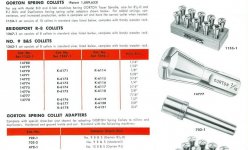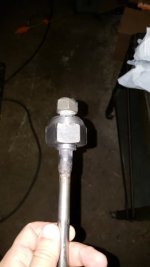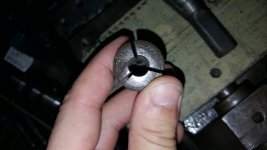leeko
Stainless
- Joined
- Jun 30, 2012
- Location
- Chicago, USA
Hi all,
I'm a new owner of a Gorton 8.5D mill, and am about to start cleaning it up (filthy!). Looking at the spindle, I believe it's a BS#9, and has a Gorton collet adaptor in it. I loosened the drawbar, and it came out freely from the top end. Out popped a gorton 1/2" collet from the spindle. The adaptor is still in place.
Reading some of the posts on here, the "correct" drawbar for the BS9 taper should have given me a second point of resistance, and further turning would pop out the BS9-Gorton adaptor. I'm thinking the drawbar I have is not that version - maybe a separate drawbar for the gorton adaptor only?
I understand it would be best to make the correct drawbar, but wanted to check first: is this actually the right drawbar, and I'm just using it wrong?
If I need to make it, would it be possible for someone to post a picture of it? I'm struggling to figure it out from the diagrams on the gorton website.
Thanks!
Lee

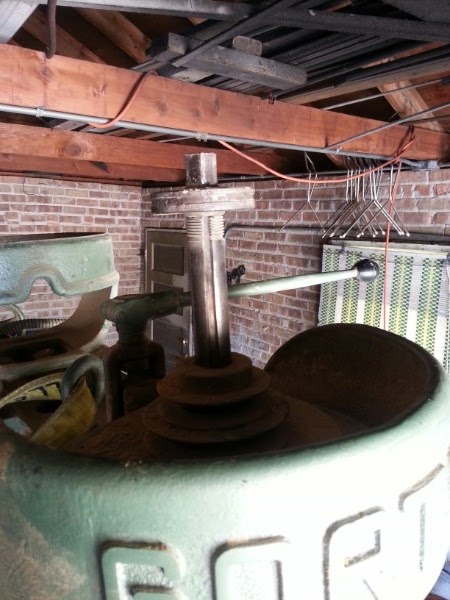

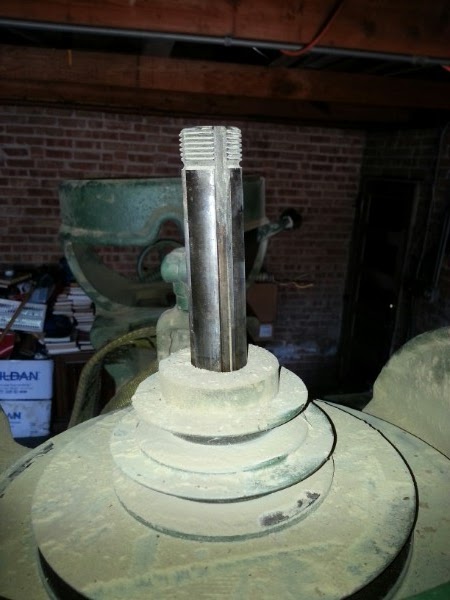
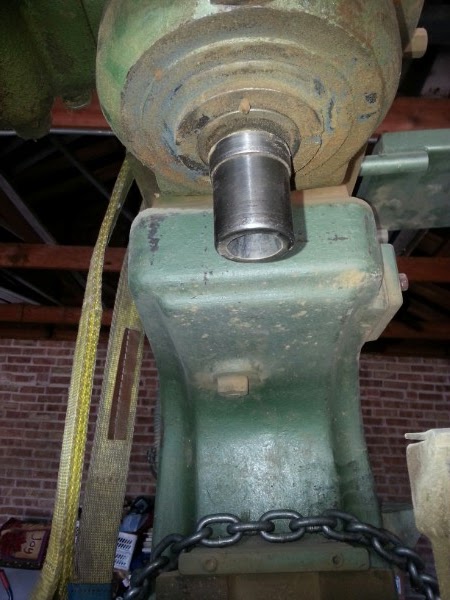
I'm a new owner of a Gorton 8.5D mill, and am about to start cleaning it up (filthy!). Looking at the spindle, I believe it's a BS#9, and has a Gorton collet adaptor in it. I loosened the drawbar, and it came out freely from the top end. Out popped a gorton 1/2" collet from the spindle. The adaptor is still in place.
Reading some of the posts on here, the "correct" drawbar for the BS9 taper should have given me a second point of resistance, and further turning would pop out the BS9-Gorton adaptor. I'm thinking the drawbar I have is not that version - maybe a separate drawbar for the gorton adaptor only?
I understand it would be best to make the correct drawbar, but wanted to check first: is this actually the right drawbar, and I'm just using it wrong?
If I need to make it, would it be possible for someone to post a picture of it? I'm struggling to figure it out from the diagrams on the gorton website.
Thanks!
Lee










